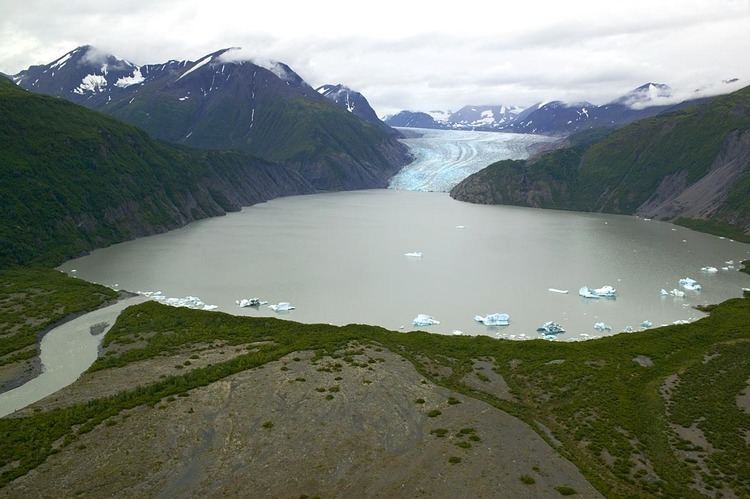Phone +1 877-285-5628 | Website Kenai NWR Established 1980 | |
 | ||
Area 1.92 million acres (7,770 km) Governing body U.S. Fish and Wildlife Service Address 1 Skihill Road, Soldotna, AK 99669, USA Similar Chugach National Forest, Kodiak National Wildlife R, Kenai Lake, Kenai Mountains, Kenai Fjords National Profiles | ||
The Kenai National Wildlife Refuge is a 1.92-million-acre (7,770 km2) wildlife preserve located on the Kenai Peninsula of Alaska, United States. The refuge was created in 1941 as the Kenai National Moose Range, but in 1980 it was changed to its present status by the Alaska National Interest Lands Conservation Act. The refuge is administered from offices in Soldotna.
Contents
- Kenai national wildlife refuge fire 5 19 2014
- Terrain Flora and Fauna
- Boating and Camping
- Canoe trails
- Hiking
- Funny River Fire
- References
As with most national wildlife refuges, the Kenai National Wildlife Refuge is open to hunting. However, the hunting of brown bears in the refuge has recently been banned due to an overkill of over 10 percent of the population. The refuge remains the only national wildlife refuge in Alaska that is closed to brown bear hunting.
Kenai national wildlife refuge fire 5 19 2014
Terrain, Flora, and Fauna
There is a wide variety of terrain in the refuge, including muskeg and other wetlands, alpine areas, and taiga forest. The refuge protects several large mammals, including wolves, brown bears, black bears, dall sheep, Alaskan moose, and caribou, as well as thousands of migratory and native birds. There are numerous lakes, as well as the Kenai River, and the refuge is a popular destination for fishing for salmon and trout.
Boating and Camping
The refuge has several campgrounds and boat launches, including two developed campgrounds, one at Hidden Lake and another at Skilak Lake, both accessible from Skilak Lake Loop Road, which intersects the Sterling Highway at both ends. Other less-developed campgrounds and campsites are accessible from the Sterling Highway, Skilak Loop Road, Swanson River Road, and Swan Lake Road, the later of which do not require fees to access. Since 2005 the refuge has offered 16 cabins for public use via a reservation system, with some cabins accessible only via boat.
Canoe trails
The Kenai National Wildlife Refuge has multiple small canoe systems linking lakes or groups of lakes. It further possess two larger canoe trails, which link large networks of lakes and rivers, often via portages. The most popular, the Swan Lake Canoe Trail, travels 60 miles, beginning at Canoe Lake (the west entrance), and terminates alternatively at Portage Lake (the east entrance) or the confluence of the Moose and Kenai rivers in Sterling. The longest, the Swanson River Canoe Route, spanning 80 miles, begins either at Paddle Lake or Gene Lake, and ends where the Swanson River meets the Cook Inlet at Captain Cook State Park.
Hiking
There are over 110 miles of hiking trails in the refuge, accessed from the Sterling Highway, Skilak Lake Loop Road, Swanson River Road, various campgrounds, and the refuge visitor center and headquarters. These hikes range from difficult, multi-day back-country hikes to easier, short paved-trail walks.
Funny River Fire
The Funny River Fire, a human-caused fire that began on May 19, 2014, had burned largely in the Kenai National Wildlife Refuge. During firefighting activities, a wolf den was damaged by a bulldozer and 5 pups (3 males and 2 females) were rescued by firefighters. The pups were taken to the Alaska Zoo and were later transferred to the Minnesota Zoo.
